Allegory in Edgar Allan Poe’s “The Masque of the Red Death”
In the realm of literature, there are many rhetorical devices that shape the way a reader interprets a story. One of them is allegory. It is a device in which characters, settings, and events in a story or image represent ideas or concepts. The ideas revealed are often of a political or moral nature (“Allegory”). Symbolism and metaphor, devices that both compare objects with ideas, are often employed in allegory. A few examples of allegorical works include Plato’s famous “Metaphor of the Cave” and George Orwell’s Animal Farm, and Edgar Allan Poe’s The Masque of the Red Death.
What is the purpose of using allegory instead of directly saying what is inferred by symbols and metaphors? Why not leave the reader to his or her own interpretations? Perhaps by using allegory to construct a narrative, the potential to reach a broader audience increases. The Masque of the Red Death, Poe creates a fictional world not unlike our own in which people vainly attempt to escape death. It has the features of a Poe horror story but is didactic in function.
Allegories can also help readers understand concepts that might be too difficult to comprehend otherwise, or, in the the case of The Masque of the Red Death, force readers to examine something that is unpleasant, such as death. Poe’s wife Virginia, as well as his mother, brother, and foster mother, contracted and died from tuberculosis (“Poe’s Life: Who is Edgar Allan Poe?”), which may have inspired him to write about the follies of pretending death is avoidable.
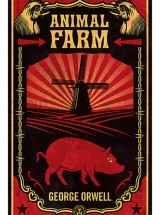
But does allegory ensure that every reader always reaches the same conclusion(s)? In The Masque of the Red Death, are we to assume that the moral of the story is that we cannot escape death no matter how hard we try, or is there something else? Poe never stated that this story was meant to be an allegory, but today it is commonly read as such. It seems that some symbols seem to have less room for interpretation than others, and others inspire a vast array of meanings due to the reader’s understanding of contextual clues. For instance, the colors black and red, especially when paired together, can be interpreted as symbolizing death and blood. However, black could also symbolize night, whereas red could symbolize passion, lust, and romance. An analysis of Poe’s story might shed some light on how allegory works and what kind of interpretations are possible in allegory-heavy stories.
Allegory in The Masque of the Red Death
The Masque of the Red Death contains imagery that upholds the story’s allegorical interpretation, as well as imagery that is open to other interpretations. The allegorical symbolism is apparent from the beginning of the story. First, in an attempt to escape the Red Death, a fictional plague-like disease, Prince Prospero gathers his friends and retreats to “one of his castellated abbeys” (Poe 438). The abbey has “strong and lofty walls” and “gates of iron” (Poe 438). Upon entering the abbey, the Prince and his guests lock themselves inside: “They resolved to leave means neither of ingress or egress to the sudden impulses of despair or of frenzy from within” (Poe 438). The Prince and his guests believe that they can hide from the Red Death by locking themselves away from the suffering of the rest of the world.
Half a year later, Prospero throws a masquerade ball to be held in the seven rooms of the abbey. Each room has a set of windows that look out into the hallway. In the hallway, there are tripods holding braziers of fire that send light through the windows and into the room (Poe 438-439). There are no windows that look outside the abbey’s walls, and therefore, there is no light from the sun or moon coming inside. These features of the abbey reinforce the notion that the lack of exposure to the outside world means that Prospero and his courtiers will be safe from the Red Death.
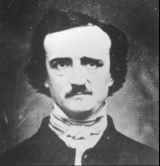
Additionally, each room is a different color. Its decorations are of the same color, as are the windows that peer into the chamber. For example, the eastern most room is blue, and it has windows of blue-stained glass. Five of the other rooms are decorated in this manner with their respective colors: purple, green, orange, white, and violet (Poe 439). However, the seventh and most westward room of the abbey is furnished with black velvet and red windows. This room has an eerie effect on the masqueraders:
the effect of the fire-light that streamed upon the dark hangings through the blood-tinted panes […] produced so wild a look upon the countenances of those who entered, that there were few of the company bold enough to set foot within its precincts at all. (Poe 439)
The Velvet Hall reminds the guests that fear is still present among them, even though the masquerade is supposed be a lively affair. The dark and bloody imagery of the seventh room also seems to foreshadow that something bad will happen to Prospero and his friends in this chamber.
The symbolism of time is also prevalent throughout the story. First, a “gigantic clock of ebony” (Poe 439) stands in the Velvet Hall. Every hour,
there came from the brazen lungs of the clock a sound which was clear and loud and deep and exceedingly musical, but of so peculiar a note and emphasis that […] there was a brief disconcert of the whole gay company […] the giddiest grew pale, and the more aged and sedate passed their hands over their brows as if in confused reverie or meditation. (Poe 439)
The clock interrupts the masquerade every time it chimes. The clock does not only mark what time it is; as a foreshadowing device, it suggests that time is running out for Prospero and his guests, though they seem oblivious to this.
The allegory continues with other “time” imagery, including the layout of the abbey’s rooms. They are arranged east to west, reminiscent of the movement of the sun across the sky, and the number of rooms, seven, is equal to the number of days in the week. Additionally, the Red Death makes its appearance at midnight. Midnight marks the transition from one day to the next, as well as from night to morning. Its significance as the time when the Red Death appears is yet again another instance of foreshadowing. Midnight is also known as the “witching hour,” when demons, ghouls, and witches are said to be most active. The prevalence of representations of time suggest that though the masqueraders attempt to escape disease and death, it is not possible to do so. Time is not a friendly force in this case.
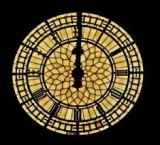
Moreover, the Red Death arrives at the masquerade dressed as its own victim: “His vesture was dabbled in blood—and his broad brow, with all the features of the face, was besprinkled with the scarlet horror” (Poe 441). It is a literal representation of death walking among the living. The Red Death is able to move around the abbey unimpeded, as its disguise unsettles the masqueraders. An enraged Prospero seeks to slay the masquerader who dares to dress like a corpse and pursues the Red Death from the easternmost room to the Velvet Hall. As soon as he raises his dagger against the corpse-figure, Prospero falls dead (Poe 442). When the guests tear away the disguise, they find no form beneath the clothes. Shortly after, the masqueraders die of the Red Death. The lack of a tangible body beneath the disguise suggests that death does not need a physical form, and it cannot be stopped by any means.
Allegory has a strong hold on this Poe tale. Almost everything in the story tells us that there is no escaping death, no matter what we do. The reader is nearly beaten over the head with allegory and symbolism: the title itself is a play on words. It is no coincidence that “masque” and the similar sounding “mask” are both relevant to the story. Both words imply that disguises and hidden abbeys cannot shield a person from the inevitable which, in this case, is death.
Other Interpretations
At the same time, it is possible to interpret some of the images and symbols in the story in a manner that moves way from the “no escape from death” analysis. Yet, it does not seem possible to completely ignore this reading. However, we can read The Masque of the Red Death as a critique of socioeconomic inequality, and we can also examine the dream-like aspect of the masquerade as another and more complex form of escape.
In terms of socioeconomic inequality, Prospero’s name suggests that he is, in fact,“ prosperous.” He is wealthy, a prince, and a ruler. However, he abandons his kingdom as soon as it is ravaged by the Red Death and half of his people are dead. He and “a thousand hale and light-hearted friends from among the knights and dames of his court” (Poe 438) flee the plague and leave the lower classes to fend for themselves. The lower classes are not mentioned by name in the story but are implied to belong to the “external world [that] could take care of itself” (Poe 438).
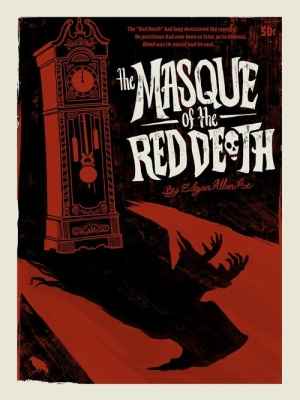
The abbey is amply stocked with supplies and with entertainment: “The prince had provided all the appliances of pleasure. There were buffoons, there were improvisatori, there were ballet-dancers, there were musicians, there was Beauty, there was wine” (Poe 438). The excess of the abbey shows the extent to which the wealthy spend their money and resources on themselves, instead of attending to their subjects.
Since the wealthy have locked themselves away, the victims of the Red Death are primarily of the lower classes. When the Red Death appears at the masquerade dressed as its victim, it perhaps terrifies the masqueraders not just because the disguise is gruesome but also because it reminds them of the people they have forsaken. The deaths of Prospero and his friends then becomes the vengeance of the lower classes: even though in life we may be unequal in wealth, we are all equal in the eyes of death.
The socioeconomic analysis of The Masque of the Red Death is but one way to interpret various images and symbols. If the masquerade sequence is read in terms of its dream-like qualities, other conclusions can be reached. For instance, the costumes of the masqueraders are described as beautiful, bizarre, disgusting, and terrifying: “There were much glare and glitter and piquancy and phantasm […] There were delirious fancies such as the madman fashions” (Poe 440). The disguises of the masqueraders and the décor of the party are meant to mask the reality of death and suffering.
The masqueraders are attempting to escape death, and they attempt to do so by escaping into a dream world, where the fancies of the mind run wild, and the Red Death is not among them: “To and fro in the seven chambers there stalked, in fact, a multitude of dreams. And these—the dreams—writhed in and about taking hue from the rooms, and causing the wild music of the orchestra to seem as the echo of their steps” (Poe 440). The masqueraders delve into a dream-like trance where reality has little bearing.
Additionally, there is a brief passage in the story that breaks into present tense:
And, anon, there strikes the ebony clock which stands in the hall of the velvet. And then, for a moment, all is still, and all is silent save the voice of the clock. The dreams are stiff-frozen as they stand. But the echoes of the chime die away—they have endured but an instant—and a light, half-subdued laughter floats after them as they depart. And now again the music swells, and the dreams live, and writhe to and fro more merrily than ever, taking hue from the many tinted windows through which stream the rays from the tripods. (Poe 440)
The break into present tense comes as the dream-state of the masqueraders is being described. The guests themselves are equated with the dreams. It is the dreams who are stopped by the chimes of the clock, and it is the dreams that pass from room to room. The use of present tense instead of past tense attests to the escapism of the masquerade.
Also, the layout of the abbey upholds the dream-like atmosphere of the masquerade. In addition to the rooms having different colors, the manner in which of the rooms are arranged is bizarre: “The apartments were so irregularly disposed that the vision embraced but little more than one at a time. There was a sharp turn at every twenty or thirty yards, and at each turn a novel effect” (Poe 438). No room has a clear view into another, and the guests find themselves wending through a maze of chambers. Coupled with the lack of windows looking to the external word and the artificial lighting, the abbey and the masquerade represent the enclosed dream-world of Prospero and his friends.
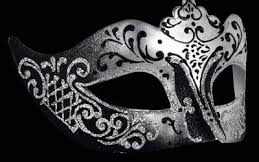
However, as with many dreams, glimmers of reality soon creep in. For instance, the Velvet Hall continues to unnerve the masqueraders: “But to the chamber which lies most westwardly of the seven there are none of the maskers who venture; for the night is waning away; and there flows a ruddier light through the blood-colored panes; and the blackness of the sable drapery appalls” (Poe 440). This quote is also a part of the section written in present tense, which signifies that the masqueraders think they are still in a dream-state. Though the other chambers are filled with people, laughter, and dancing, the Velvet Hall brings elements of death and violence into an otherwise happy, though bizarre, dream-world. It isn’t long before the dream crumbles around them, and reality is made known to Prospero and his friends.
Conclusions
So what difference does it make if a story is considered an allegory? The Masque of the Red Death is labeled an allegory because the symbolism and imagery seems to point the reader to one conclusion: death is coming, whether you want it to or not. While allegory gives us an interpretation of the world, we can agree or disagree with it, and of course we are free to draw our own conclusions from the story. Some stories are written with the intention of being allegorical, and other are not, but once a story is released for popular consumption, the reader will make his or her own interpretation of the story. Additionally, there is no way to be sure if Poe meant The Masque of the Red Death to be read as allegory or as having an overarching moral.
At the same time, some stories are perhaps designated allegories because the audience gains a more complete understanding of the world by having read them. Allegories seem to explore ideas that we might hold as common truths. Maybe the colors red and black usually symbolism blood and death because those things exist in our world and affect the way we live. Even if we ignore the allegorical interpretation of a story, we can reach our own conclusions that might affect our lives or at least the way we think. Literature often serves the purpose to teach us about the way we live, and allegory and symbolism are but merely a tool on which the author and reader can rely in order to comprehend the world a little better.
Works Cited
“Allegory.” Merriam-Webster. Web. 8 Jul. 2014. <http://www.merriam-webster.com/dictionary/allegory>.
Poe, Edgar Allan. “The Masque of the Red Death.” Edgar Allan Poe: Complete Tales and Poem. New York: Fall River Press, 2012.438-442. Print.
“Poe’s Life: Who is Edgar Allan Poe?” Poe Museum. Web. 15 Jul. 2014. <http://www.poemuseum.org/life.php>.
What do you think? Leave a comment.











Thank you so much for the wonderful ideas. I’m a new teacher, and I was looking for more information on the symbolism in The Masque, and yours was interesting.
Instead of having my students make masks, I’m having them write color poems based on our discussion in class. Then I am planning to put up a wall display of the abbey’s layout with the color poems in the corresponding rooms.
Glad you enjoyed the article! I’m sure your students will enjoy writing poems about the story. Best!
That sounds like such a fun thing for a class! I wish I had a teacher like you when I was studying poe 🙂
This allegory about life and death and the powerlessness of humans to escape the boundaries of time is one of my favourite stories since the imagery is so beautifully portrayed and keeps reminding me (just like the clock in the story) that you can not escape death. We will all eventually end in the seventh chamber, the gruesome, eerie land of death.
Edgar Allan Poe’s writing is beautifully haunting.
This one encompasses everything I look for in novels.
I always enjoy reading Poe’s stories simply for his descriptions and word choices. He has a way of making everything eerie and creepy just by the phrases he uses and the imagery he gives the reader. The Masque of the Red Death is no exception. An allegory for the bubonic plague, he describes the Red Death in chilling detail, as well as the deaths of the courtiers and Prince Prospero (who all have it coming) and the infected person that sneaks into the castle.
Beautiful. Edgar Allan Poe was a literary god.
Very interesting thesis.
I have never read anything by Edgar Allan Poe before, and I’ve always been a bit worried about attempting to because of the hype around his writing and the reputation he has in literature.
I liked the haunting aspect of the story. All of Poe’s work is great.
I consider this to be the finest thing Edgar Allan Poe ever wrote.
Poe’s over-rated.
We just covered “Masque” in my summer class. It made me want to write about masquerade balls. 🙂
One of the details I enjoyed about “Masque” was the description of Prospero — ~many thought he was mad; you would have to touch him and hear him to know he was not~ (so… is he, really?) — and the fact that the apartments are expressed as his ideas made real. In other words, I’m fond of an interpretation that casts the entire thing as happening in his own mind.
The Prince is also the only one in the story with a name, and the other famous Prospero rather famously broke his staff and renounced his magic in order to return to the world.
Poe was a genius. The simple, blatant allegory to this, laying so close to the surface, is handled beautifully; although, there’d be numerous ways to interpret it’s meaning. I love everything about Masque, but mostly the story’s final, defining line is what makes it for me.
I remember reading this in high school. I was a quick worker and ended up reading it in class several times because I didn’t have anything to do because I finished my Masque worksheets before everyone else. I use to know this story so well. Great critique.
Great set of interpretations takacss1. You also bring up a lot of good points concerning the nature of allegories; are they meant to be seen only one way, or are there a myriad of interpretations lying beneath their surface? I’m more appreciative of the latter form of storytelling as it provides readers with more avenues for discussion. Again, great piece.
Very well argued. Oddly, I had never considered the allegorical elements of this particular story. I think we could also look at death in this story (and all of his stories) as unavoidable. Here, prosperity incarnate (Prospero) cannot save them from a horrible death.
I enjoyed reading your article and it was very helpful with your definitions as you proceeded with the story. I have forgotten these definitions and it was a great refresher. Thanks
This is a difficult project lol!
Edgar Allen Poe developed his own formula for writing and applied it to both his poetry and prose. This article demonstrates some of the techniques Poe used to drive the reader towards a carefully planned and inevitable denouement.
I think its important to also examine the word Masque which you touch upon briefly. While it is an alternate spelling of mask, its also important to note that a Masque was a costume party thrown for entertainment in the 15th and 16th century. So the title “The Masque of the Red Death” implies that not only that the party belongs to the Red Death but also that this is almost a form of entertainment for the personified Red Death.
I plan to use this in my classroom. Thank you for the analysis!
I understand Poe’s message to be that, rich or poor, we cannot isolate ourselves from the problems that are endemic to human society. Poe’s understanding of God and the Bible would point to that conclusion.
A really interesting interpretation of a Poe story I love so much!
Great read!
Reading about Poe in this article seems to suggest to me that it is referring to something that doesn’t exist. This would be a sort of proto-modernist lens.